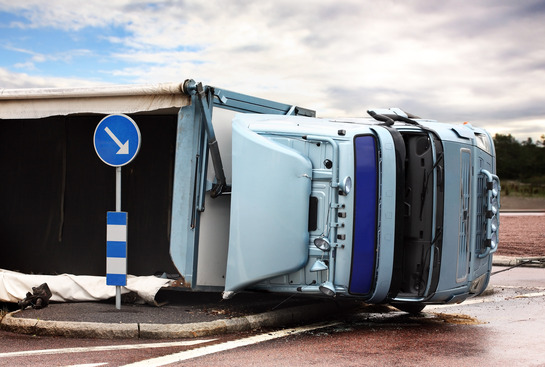Boulder Truck Accident Attorney

The Physics of Large Truck Collisions
Who Was Responsible for Your Crash? What Can You Do About It?
Bart Costello has represented many clients whose vehicles were struck by large tractor trailers (also known as 18 wheelers) and by other trucks as well including gasoline tanker trucks and garbage trucks. Many of these trucks and their drivers are subject to special legal requirements under the Federal Motor Carrier Safety Act regarding reflectors, driver hours of service, drug and alcohol testing, and much more. Bart Costello has seen blatant disregard by some trucking companies of these regulations. You need a Boulder truck accident attorney who knows the special state and federal laws which apply to large trucks.
Large truck accidents, caused by commercial big rigs or personal vehicles, exact a disproportionately devastating toll. Per the National Highway Traffic and Safety Administration (NHTSA), collisions involving trucks cause nearly 4,000 deaths and 104,000 injuries annually, according to a 2012 survey.
Our nation depends on big rigs and other large vehicles to facilitate industry and keep our grocery stores stocked and move fuel. But public safety advocates have struggled for years to figure out how to regulate the trucking industry better, improve road engineering, and prevent or at least limit the number of devastating crashes.
The Physics of Large Truck Collisions
Here’s a vivid thought experiment to help explain why big truck crashes tend to be so deadly.
If you recall from high school physics, force is equal to mass times acceleration (F=MA). Another way to phrase this is that the force created from a motor vehicle accident is equal to the vehicle’s mass multiplied by its change in velocity. This means that the faster you go, the greater the force. It also means that the more massive the vehicle, the greater the force of the collision. For instance, let’s imagine that a 20 ton big rig crashes into a brick wall at 40 miles per hour — slower than highway speed. In order for a 2 ton passenger car to generate that same amount of force, it would have to travel at 400 miles per hour into the brick wall. And in order for a 200 pound man on a bicycle to create that same amount of force, he would have to peddle at 4,000 miles per hour – more than five times the speed of sound.
Who Was Responsible for Your Crash? What Can You Do About It?
You may be able to take legal action to seek compensation for your injuries or the injuries a loved one including lost time at work (past and present); medical bills, the costs of rehabilitation therapy; loss of companionship; punitive damages and more.
People or parties who could be responsible to pay might include:
- A negligent or careless trucker. Perhaps, for instance, the driver who hit you had been fatigued because he drove more hours than the law allows.
- The trucking company that hired a driver with a bad driving history or a history of drug and alcohol abuse.
- Insurance companies who represent these defendants.
